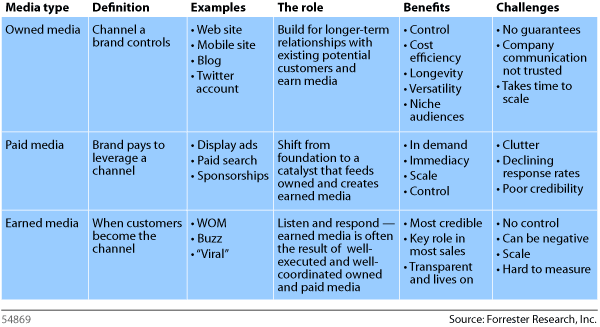In this Execution section, we’ve covered how to build a website, ways to deal with mobile, and why brands still need to own the experience end to end on their digital property to ensure a conversion.
At this point in the marketing lifecycle, the digital marketer has survived a website launch or redesign and is now tasked with proving the return on investment (ROI) for the digital property.
Here is where the real work begins because usually within a few weeks it’s discovered:
- Hardly anyone visits the website.
- Nobody is engaging on social media.
- Conversions are depressingly few and far between.
Every website faces the challenge of getting people to take time off Facebook, or email, or Twitter, or Pinterest to spend time on their website. Despite what the press might say about sites and apps launching and having millions of users in a few weeks these are almost always the extreme statistical outliers.
For the beginning digital marketer this can be overwhelming to know where to start. A thousand different levers exist to pull. A Google search reveals an endless stream of blog articles touting sure-fire ways to grow traffic overnight.
Don’t believe it.
Building an engaged audience and growing unique visitors to your website is mind-numbingly hard work. This gets infinitely harder if a user-first approach for the digital brand experience has not been adopted from the beginning. It’s much easier to pull in people from social, search, and paid online advertising if we can identify with their desires and needs and then get them to engage emotionally.
A useful framework for considering how website traffic can originate is to consider the Paid, Earned, and Owned media model first put forth by agencies and brands starting around 2009. There can be some confusion as to what each of these might mean.
Below is a useful breakdown courtesy of Forrester Research.
Owned media:
This is in essence the properties the brand can control like an app or website and to some degree social networks like Facebook and Twitter.
Earned media:
This represents the holy grail of marketing: positive word of mouth if things go well for the brand. As the chart points out virality and buzz can be extremely hard to spark and brands have little control on where the conversation may go online. For users things like PR and the conversation taking place online is where they put most of their trust, as we all inherently trust the crowd over the brand.
Paid media:
This is good old advertising in an online experience. Examples might include small text ads on the side in the SERPs or display ads on a site like the New York Times. Many companies will turn to these tactics to turn up volume and drive traffic to a site. It’s a pay to play model.
Where should I start?
Knowing where to dive into each of these buckets can again be overwhelming. Here’s a rough workflow to know where to start:
- Owned. Ensure you have a great digital experience on Owned. If you’ve been following along in this text, you are well on your way by using an empathy-first approach.
- Earned Media requires a solid dedication to listening to the conversation. Whether it’s earning shares on social media, in blog comments on a press site, or in user’s reviews on ecommerce sites, the digital marketer has to be ready to listen and then participate in the conversation. Remember consumers are in control today and transparency and authenticity are crucial. Large brands have struggled to adapt to this massive disruption and there is a trail of case studies of clumsy brand managers trying to impose their will and turn a deaf ear on the crowd. As we saw with “Dell Hell” it can indeed be a painful lesson. Done right this can be tremendously powerful for generating great traffic.
- Paid Media can be a dependable source for bumping traffic. As we’ll cover here in the next section, online paid campaigns can be turned up or down almost instantaneously. Yet, to get these campaigns to perform requires rigorous monitoring, testing, and tweaking with a solid understanding of online analytics.
Building traffic that grows month over month is the result of many factors: great user experience on the brand’s digital property, valuable content, constant monitoring, and a curious mindset to test. It’s best to have a solid workflow for executing against the strategy first. Next, focus on developing a solid brand voice on social media and in online conversations. Finally, add Paid Media to the online marketing mix once the measurement and conversion goals are in place. Depending on the size of the team and experience, this can be a tall order. Take it bite by bite and as everyone gets the hang of it scale up the complexity.
Key Takeaway: Earning engagement with users (attention is the true currency online) is a hard fought battle. There are no shortcuts to growing engagement month over month, despite the myriad of get rich quick schemes pitched online.

